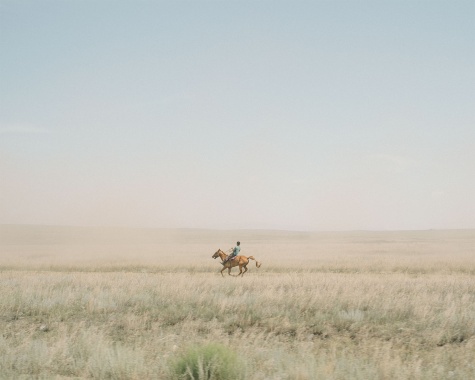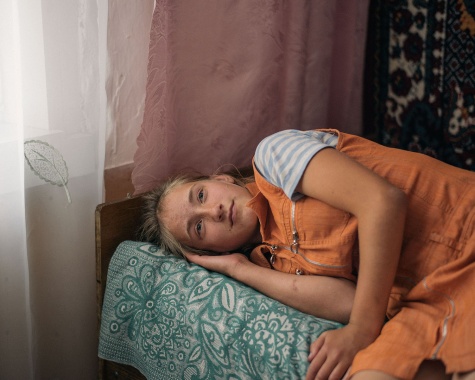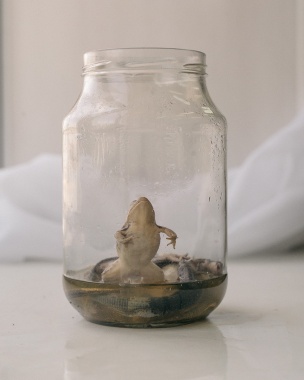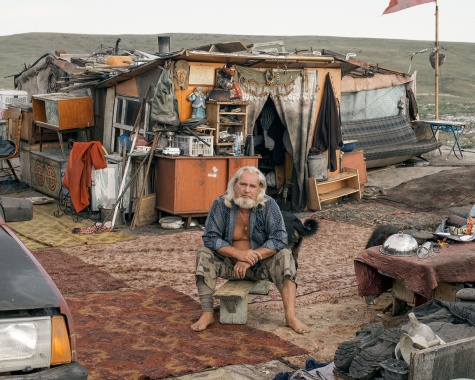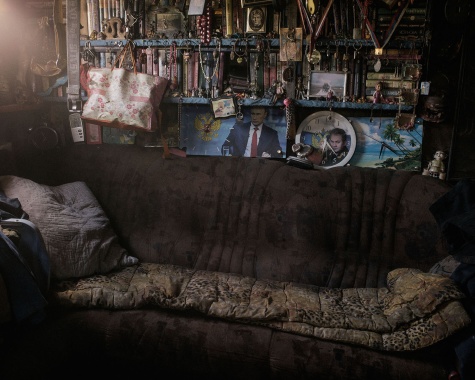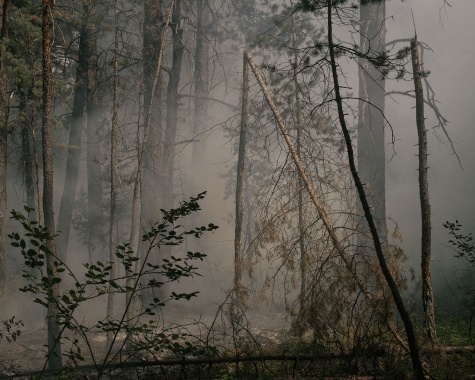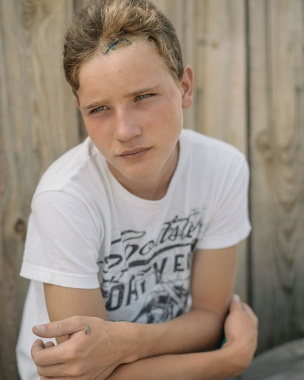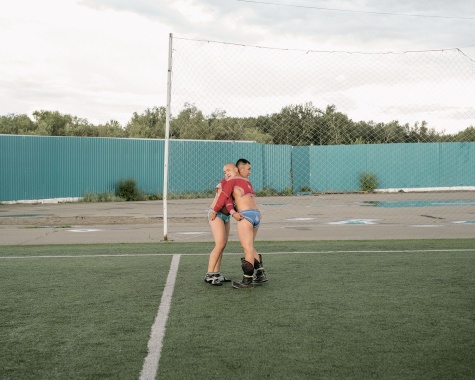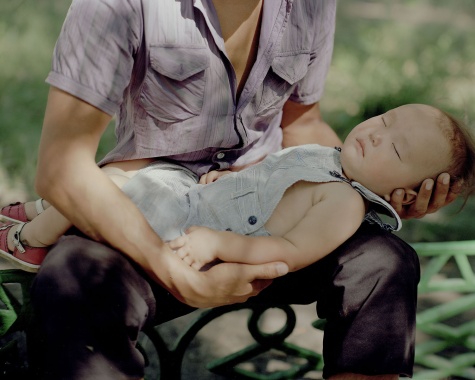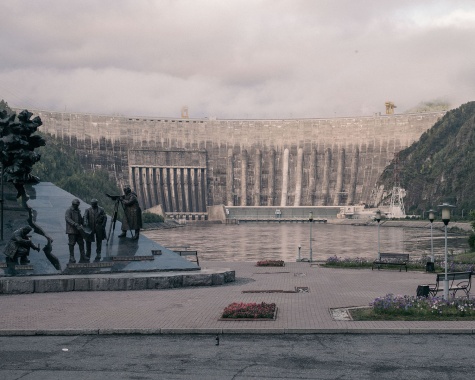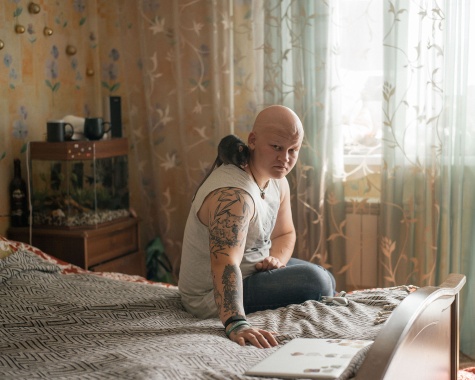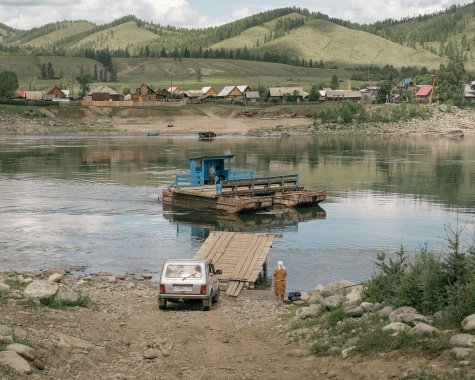Nanna Heitmann – Hiding from Baba Yaga, Newcomer 2019
A seemingly endless river, enchanted forests, and people in search of freedom: in her series, which earned her the 2019 LOBA Newcomer Award, Nanna Heitmann documented life along the banks of the Yenisei River. One of the longest rivers in the world, it served as a leitmotif, guiding her through Siberia to the completion of her series depicting a journey into a kingdom of myths.
The initial impulse for the project came during a semester spent abroad in Tomsk, Siberia. Until that time, Heitmann’s idea of Russia was mainly defined by Soviet children’s films and Slavic fairy tales. “My mother is from Russia; but Russia, apart from Moscow, for me was just a large, blank space on the map. So, I decided to do a semester abroad in Tomsk, Siberia.” That is how she came to learn about Baba Yaga, a figure from Slavic folklore, who gave the title to the series. Baba Yaga is an unpredictable and dangerous witch who lives in a little hut in the middle of the forest. One day she imprisons a young girl called Vaselisa, who manages to escape from Baba Yaga’s hut with the help of a thin black cat. As Vaselisa is being chased by the witch, she remembers a piece of advice given to her by the cat, and so drops a towel and comb behind her. Immediately, a very deep and wide river opens up on the spot, bordered by a forest so high and so thick that Baba Yaga cannot pass through: welcome to the endless banks of the Yenisei!
“I viewed my journey as a documentation of life along the river, and about the mythology of the region. I searched for dreamlike images.”
For my project, I borrowed a Russian jeep, packed it with camping equipment, and drove towards the Tuva Republic in the south of Siberia. I had some inspired images in mind and places I wanted to see along the way,” the photographer remembers. The Yenisei has its source in the Tuva Republic, on the border of Mongolia, then meanders northward through Siberia, until finally flowing into the Arctic Ocean. Following its course led Heitmann through the harsh wilderness of the Siberian taiga, a region rich in ancient myths and rituals.
Masters of Russian painting were an important visual revelation for Heitmann. In particular Ivan Bilibin, who illustrated old Russian fairy tales, and Mikhail Nesterov, whose symbolic paintings at the Tretyakov Gallery in Moscow, amazed her as a child. These artists helped inspire her magically suggestive pictures, created in gentle colour schemes, and telling stories of a strangely mysterious world: Yuri lives not far from the banks of the Yenisei, in a hut he has built on a rubbish dump. This abode is where he can live freely. Not all of Heitmann’s encounters along the way speak of freedom and longing, however. Some of them reflect the difficulties of the region: low life expectancy and serious alcohol problems. “I consider the people who find the necessary space in the expanses of Siberia to live according to their own ideas, all the more fascinating,” Heitmann explains.
(Text updated 2020)
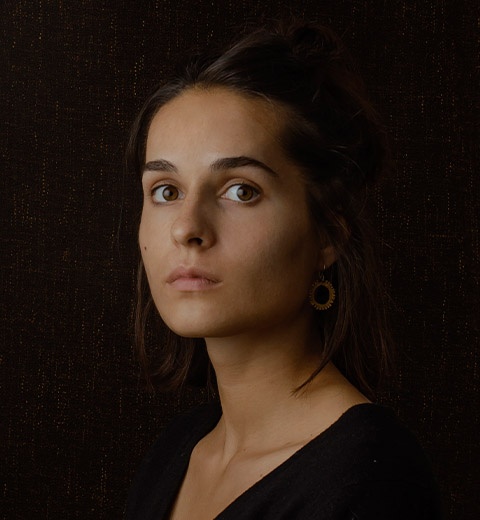
Nanna Heitmann
Born in Ulm in 1994, the German-Russian documentary photographer studied Photojournalism and Documentary Photography at college in Hanover. Her works often deal with issues of isolation – physical, social and spiritual – as well as the very nature of how people react to and interact with their environs. Heitmann became a nominee for the Magnum Photos agency in 2019. She is currently based in Moscow.
Portrait: © Nanna Heitmann
